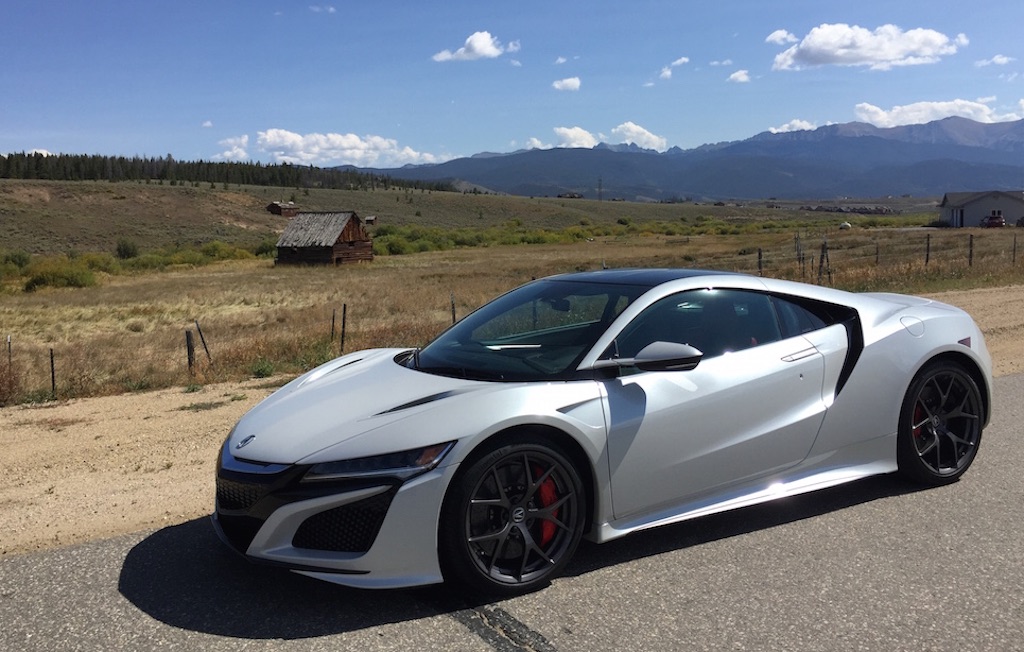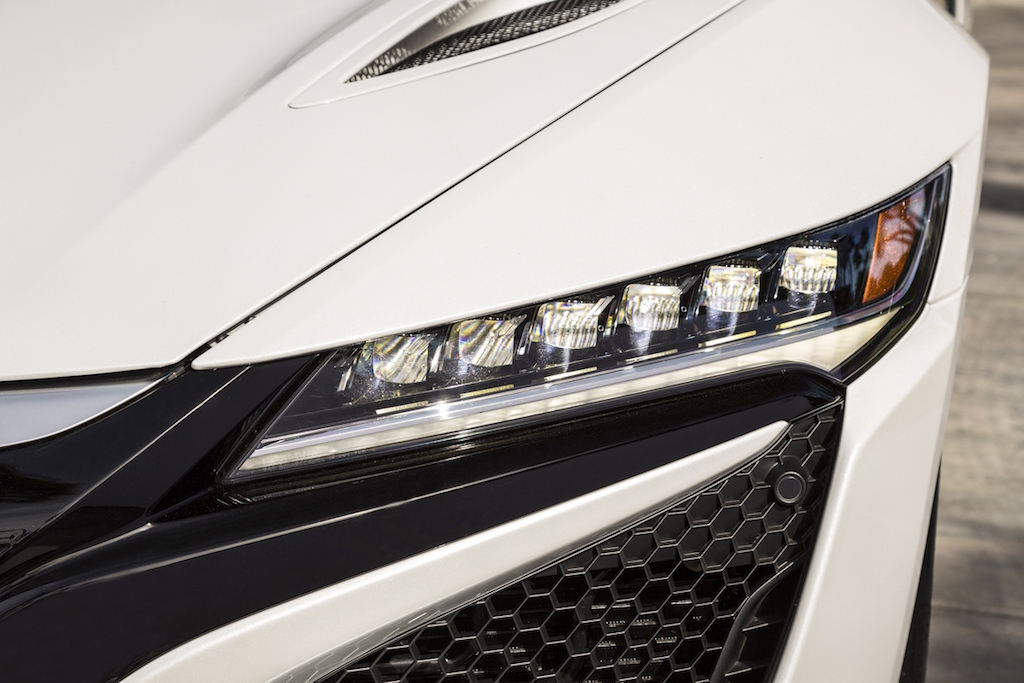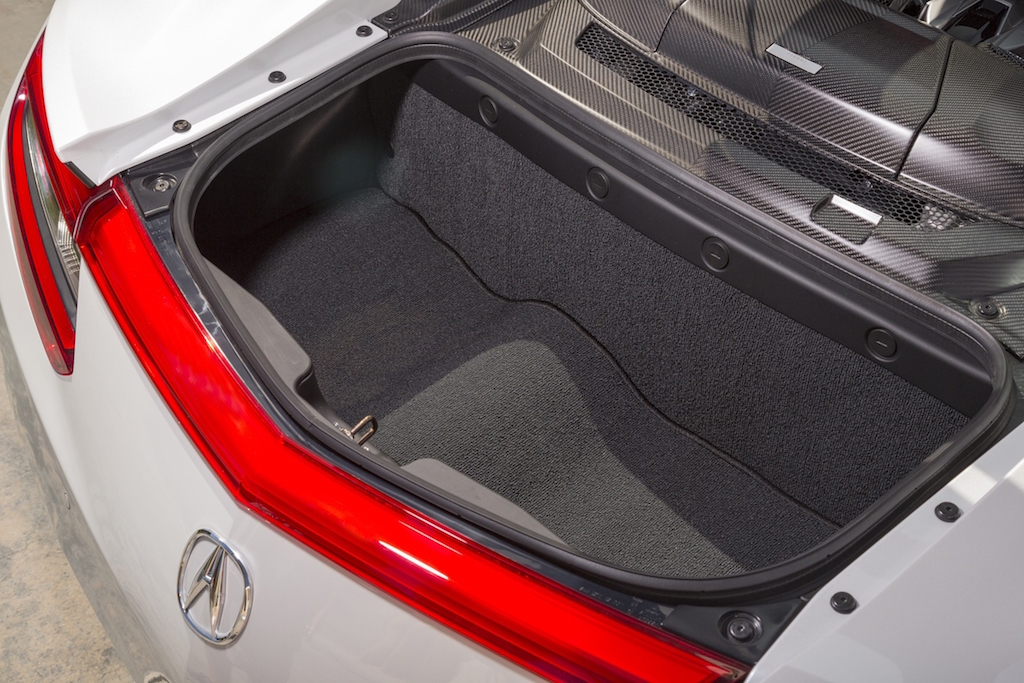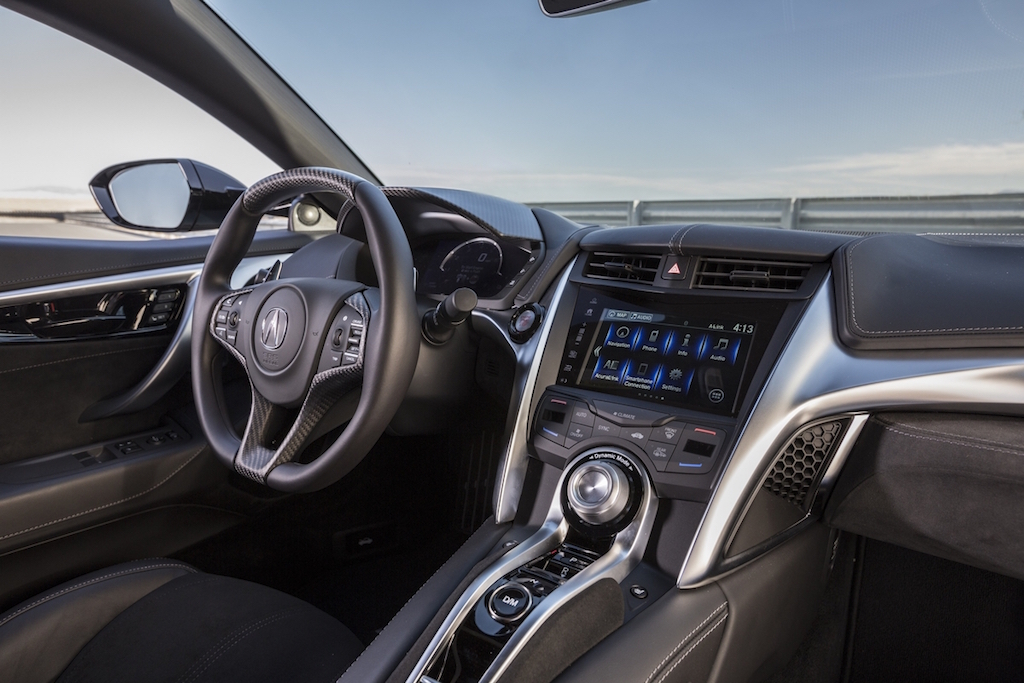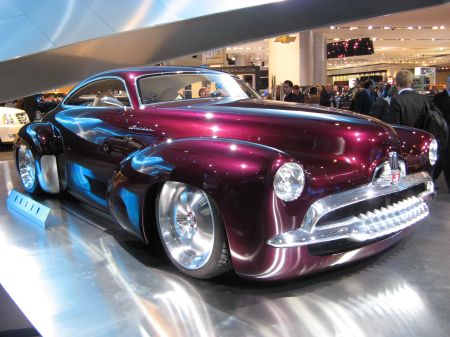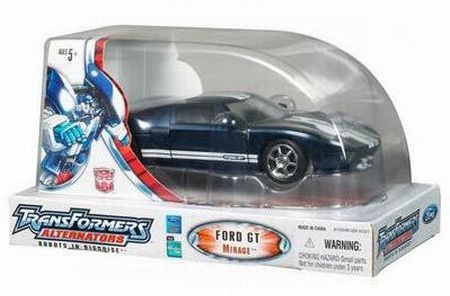First Drive: 2017 Acura NSX
The automotive highlight of RMDE 2016 was undoubtedly the 2017 Acura NSX. The original Acura NSX — known throughout the rest of the world as the Honda NSX — was a breakthrough , produced from 1990 to 2005 and developed with the assistance of Formula 1 legend Ayrton Senna, arguably the greatest Formula 1 driver of all time. The original NSX helped burnish Japan’s ability to create a sportscar that could compete with the best the rest of the world had to offer, and managed to combine impressive performance with precise handling and a driver-friendly design.
Honda decided to launch a successor to the NSX, and the result of that decision is what you see here: The all-new 2017 Acura NSX. I spent close to an hour with the NSX over a two day period in Winter Park, Colorado, and  managed to drive the car on a mix of road types.
While some exotic supercars in the same price range (and higher) have a reputation for being expensive, temperamental, and a challenge for mere mortals to drive, I found this new NSX to be approachable, accessible, and a pleasure to drive.
Manufactured in Marysville, Ohio, the new NSX sports a 3.5 liter, twin-turbo V6 — good for 573hp — that is joined by three electric motors. The first motor sits between the engine and the 9-speed automatic transmission, while the remaining two electric motors sit on the front axle, powering the front wheels. An upgraded version of Acura’s SH-AWD system powers all four wheels, and has been christened the Sport Hybrid SH-AWD system. The NSX seems a bit heavy (3,803 lbs) when compared to other exotics, but the 21 city / 22 highway fuel economy ratings are impress for a supercar.
While the NSX cabin is snug and space is at a premium, I found that once I shoehorned my 6′ 2″ frame into the comfortable driver’s seat, the seat was snug and comfortable, like sliding on a well-worn set of gloves. Outward visibility is outstanding to the front and sides, with lots of visibility in the front, partially thanks to a very low, sloping hood. Visibility to the rear isn’t as good, as the thick, sloping C-pillars and the rear engine compartment limit rearward visibility somewhat. The instrument panel is very accessible, with clear, legible labels, reachable knobs, and lots of nice ergonomic touches.
The NSX boasts four different driving modes:Â Quiet, Sport, Sport +, and Track. Quiet mode lives up to its name, as you’re running solely on electric motors for under-the-radar driving. Sport and Sport + turn on the gas engine to varying degrees as needed, while Track pulls out all the stops: If you want the most performance and to hear the twin-turbo V6 scream at its 7500 RPM redline, that’s the option you should select.
While I didn’t get the opportunity to drive the NSX on a track, I did spend some time on a variety of road surfaces and environments, from highway merging to curvy mountain driving. In all cases the NSX was approachable and confidence-inspiring, perfect as a daily driver and even more enjoyable when a chance for more spirited driving presents itself.

